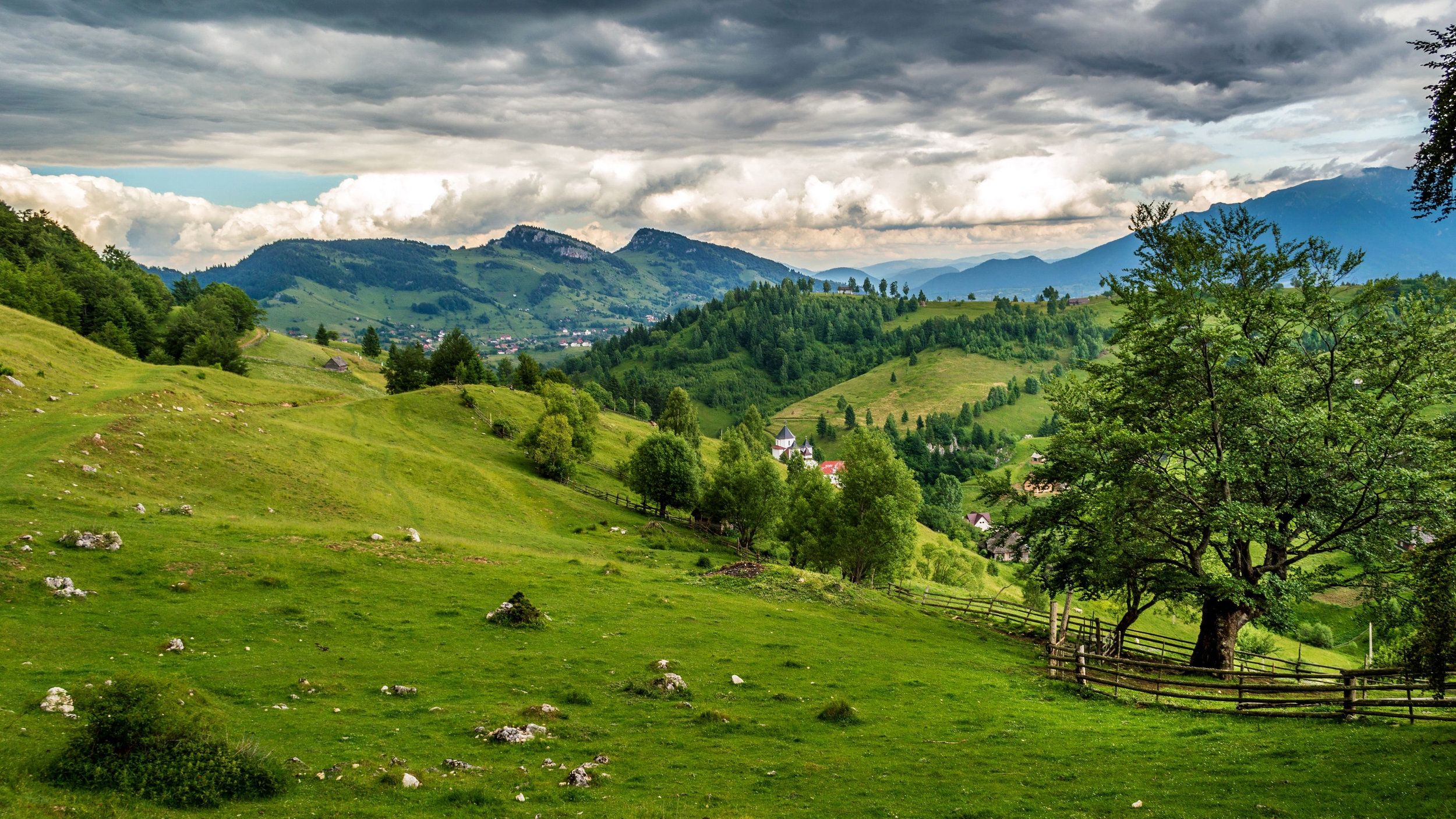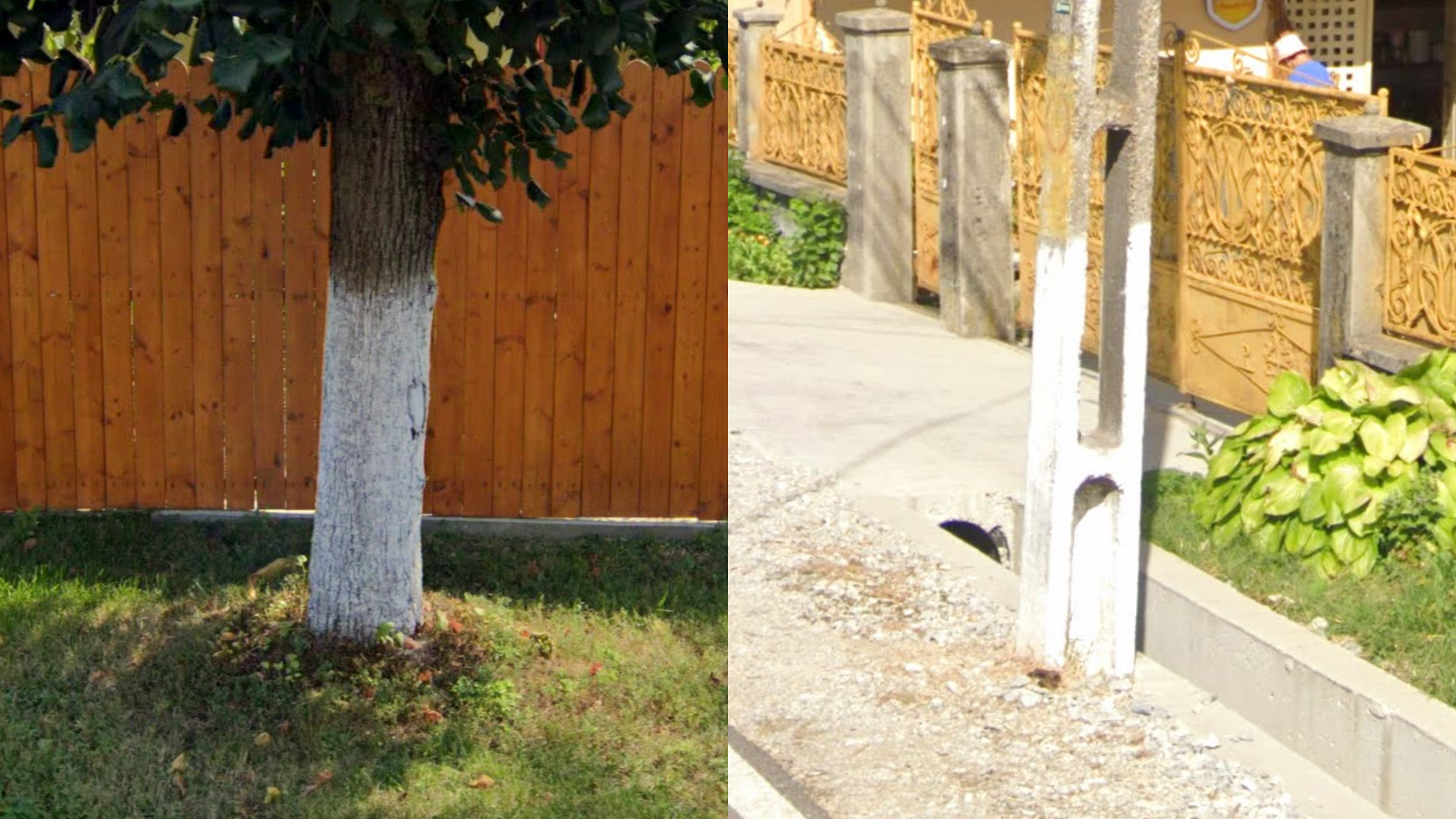
Romania
The most common types of utility poles in Romania are holey poles with the holes going all the way to the bottom. The holes are typically either quite wide or quite tall.
NOTE: Poland and Hungary also both use holey poles. Polish holey poles do not have holes near the bottom and Hungarian holey poles generally have smaller holes than in Romania.
This type of extremely large yellow pole sticker is specific to Romania.
Beware that smaller stickers are also common and that both Bulgaria and Hungary can have similar ones.
NOTE: The town or city name will typically be written close to the middle of these stickers. In this case Podu Iloaiei is written.
Middle lines are often noticeably thicker than average. This is especially useful to tell Romania apart from Bulgaria, which generally has thinner road lines.
Romanian directional signs are blue, arrow shaped, and have a white border. They will very often display the road number, which can be either red or blue.
The most common type of town entry sign in Romania is a yellow sign displaying a speed limit and a city skyline, with a white sign displaying the town name below.
NOTE: The upper sign can also either be white or completely absent.
Romanian architecture primarily consists of single-family houses made of stone, typically painted in different pastel colours and with roofs ranging from orange tiles to grey metal. It is also somewhat common to see houses with walls made of painted square tiles in different patterns.
Villages near the Hungarian border will often be built in the same style as villages in Hungary. This style can be summarised as having long, straight streets with single-storey houses being evenly spaced along the road, typically having the short side of the house facing the road. The vast majority of roofs will have orange tiles.
GeoGuessr’s own official maps are not very good, for a variety of reasons. Plonk It recommends the following map instead:
A Balanced Romania (map link) - 23k+ arbitrarily generated locations in Romania. Not pinpointable.
In addition, here are some resources to help you practise the Romania:
Plonk It Romania (map link) - This map contains locations for practising each meta in the Plonk It Romania guide from step 2 to 3.





































